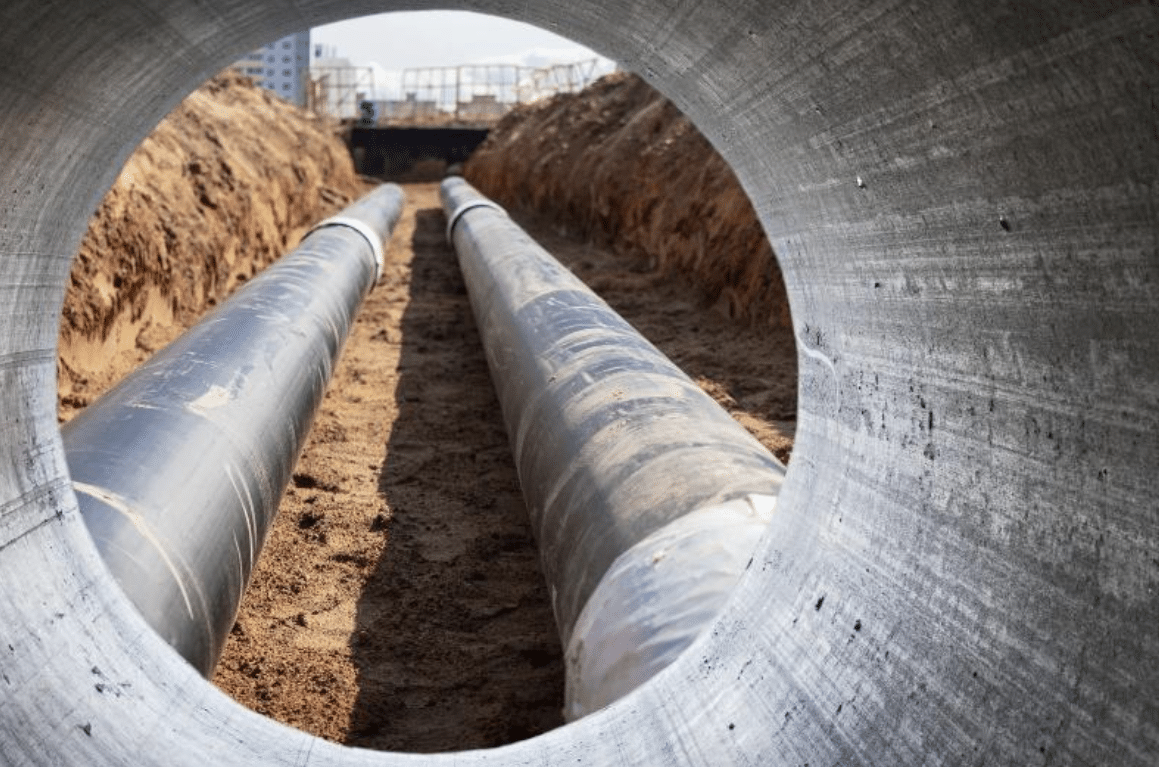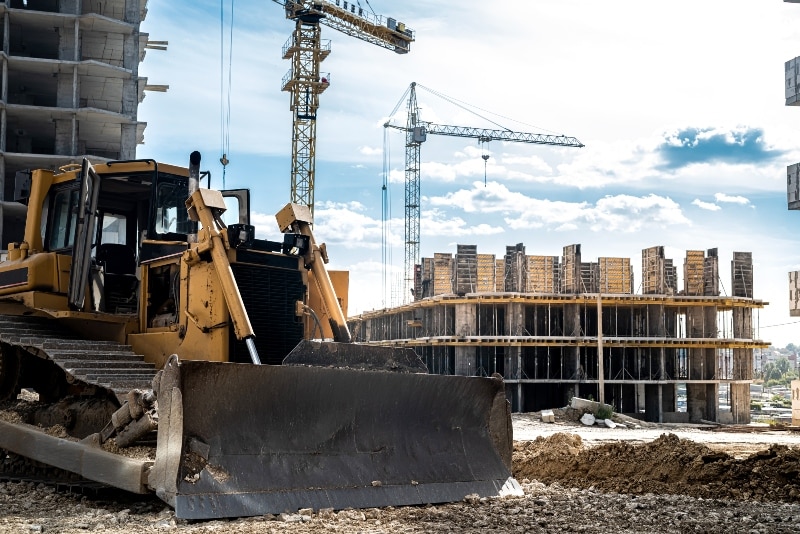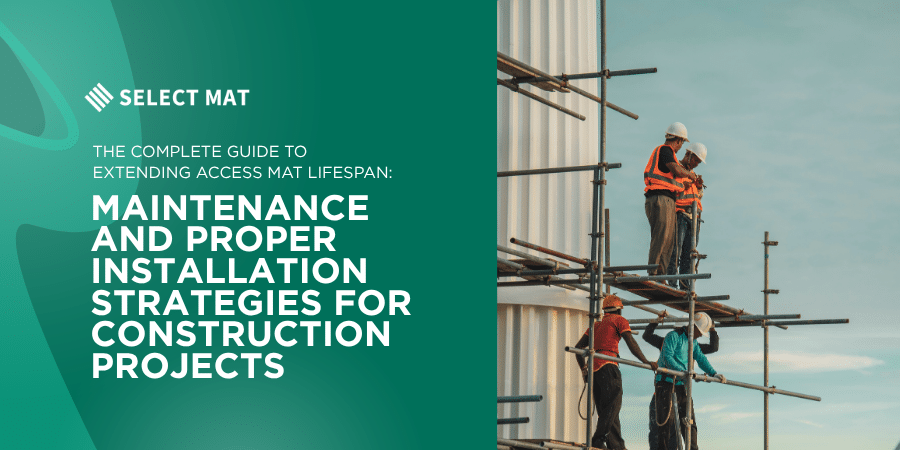 Construction mats are integral to maintaining a stable platform for heavy machinery, minimizing ecological disruption, and ensuring safe passage across challenging terrains. You’ll find that both composite and timber mats can fulfill these needs but vary in terms of composition, longevity, robustness, and environmental implications.
Construction mats are integral to maintaining a stable platform for heavy machinery, minimizing ecological disruption, and ensuring safe passage across challenging terrains. You’ll find that both composite and timber mats can fulfill these needs but vary in terms of composition, longevity, robustness, and environmental implications.
For those gearing up for a pipeline, or transmission and distribution (T&D) assignment, securing the right type of matting is a critical component of project success and operational productivity. Site managers, project coordinators, and procurement specialists regularly encounter the crucial choice between renting composite mats or opting for traditional timber alternatives. Our objective is to shed light on the strengths and limitations of each mat type, providing you with the detailed insight necessary to rent with confidence, ensuring your project advances with maximum efficacy and environmental consideration.
Composite vs. Timber Mats: The Traditional Choice
Timber mats, also known as wooden access mats or swamp mats, have been the go-to option for many years. Crafted from hardwood, they provide a robust and reliable surface for heavy machinery and vehicles.
Pros of Timber Mats:
- Natural Material: Timber is a naturally occurring resource, which some consider an eco-friendly option.
- Repairability: Timber mats can be repaired if they break, potentially extending their life.
- Familiarity: The construction industry is well-acquainted with timber mats, so procurement and use come with a certain ease.
Cons of Timber Mats:
- Environmental Cross-Contamination Risks: Not only are timber mats substantial in weight, which affects their transportation costs, but they also carry an ecological risk that is often overlooked. Upon their first deployment, these mats may absorb and then carry seeds, spores, fungus, and soil from one construction site to another. This unintentional transfer poses a severe contamination risk, jeopardizing both the integrity of construction projects and the health of ecosystems, particularly farms or sensitive environmental areas.
- Increment in Transport Cost Due to Weight Gain: Despite their initial robustness, timber mats can become even heavier after being deployed. As they inevitably pick up water and soil, they gradually gain weight, making them significantly more cumbersome and more expensive to move from the project site than when they were brought in. This property inflicts not only a financial burden on the transportation budget but also an operational challenge in logistics.
- Vulnerability to Rot and Insect Infestation: Apart from logistical burdens, timber mats are organic and thereby prone to the natural decay processes that afflict wood. They can succumb to rot and become compromised by insects, factors that can dramatically shorten their functional lifespan and consistency in performance.
- Uneven Durability and Quality: Timber mats vary in quality and durability due to their natural origin, which can result in a lack of uniformity. Not every mat will withstand the rigors of a construction site equally, which can lead to unforeseen complications and potential safety hazards when they fail to perform as needed.
Composite Mats: The Modern Evolution
Composite construction mats are the more recent innovation in ground protection. Made from high-density polyethylene (HDPE) and other materials, they offer a different set of advantages to the construction sector.
Pros of Composite Mats:
- Resilient Against Decomposition and Vermin: Composite mats boast an exceptional resistance to rot and insect damage, reducing the need for maintenance. Unlike their timber counterparts, these mats are engineered to endure without the same susceptibility to the degrading forces of nature, thus extending their usability on the job site.
- Significant Transportation Cost Savings: Weight efficiency is a hallmark of composite mats. These construction staples are decidedly less hefty than timber mats, facilitating more cost-effective transport logistics. Remarkably, the surface area hauled per truckload ranges from 3,380 to 4,095 square feet with composite mats, towering over the 1,536 to 2,048 square feet afforded by laminated timber mats. This is not just a marginal enhancement in transport efficiency; it’s a transformative reduction in costs and environmental impact from decreased fuel consumption.
- Longer Operational Life: The advanced materials used in composite mats contribute to a longer operational life. Since they are less prone to breakage and persistent damage, they provide a long-term solution on construction sites, potentially outlasting timber mats and ensuring a robust working platform over multiple projects.
- Environmental Considerations and Contamination Control: A noteworthy environmental advantage of composite mats is their ability to minimize biotic contamination across job sites. The non-porous nature of composite materials significantly reduces the risk of transferring seeds, spores, and fungus, protecting local agriculture and sensitive ecosystems from the unintended spread of non-native species or pathogens.
- Environmental Impact and Recycling Potential: Many composite mats are constructed from recycled materials and are fully recyclable at the end of their lifespan. This closed-loop potential underscores the sustainable appeal of composite mats, aligning with green construction practices and the ethos of environmental stewardship.
- Responsiveness to Climate: While it’s true that composite mats offer durability, it’s important to address the fact that in colder climates, the material can become more brittle, and there is a possibility of locking pins freezing, which may impede mat disassembly and retrieval. Transparency in this potential challenge ensures rental customers can plan accordingly and select the mat that best aligns with the weather conditions of their project sites.
Cons of Composite Mats:
- Initial Investment: It’s important to acknowledge that composite mats often come with a higher upfront investment compared to timber mats. For construction businesses considering rental options, this cost differential is a critical factor in budget planning and calculating the return on investment over the lifecycle of the project.
- Limitations in Reparability: While composite mats are celebrated for their durability, there’s a caveat; not all damage is recoverable. Many forms of impairment can indeed be fixed, yet when composite mats sustain severe damage, they may be beyond repair. This non-reparability not only translates to added costs for replacements but also poses a stark contrast to timber mats, which typically offer a higher likelihood of being repaired, even when considerably damaged. Ensuring that stakeholders are aware of this disadvantage allows for informed decision-making regarding potential long-term replacement expenses.
Considering the Project Requirements
The choice between composite and timber mats should be influenced by project specifications and environmental considerations:
Job Site Terrain and Duration
Interestingly, it is the short-term projects that stand to benefit most from the use of composite mats, largely due to the significant transport cost savings they offer. Their lighter weight and higher surface area per truckload optimize logistics, making them a cost-effective choice when the timeline is brief.
Conversely, while it may seem counterintuitive, timber mats are particularly advantageous for projects located on undulating or uneven terrain. Their heavy and robust nature inherently provides the stability required in such landscapes.
Therefore, if your project extends over a shorter period and is located on relatively level ground, opting for composite mats could align with both your budgetary and operational needs. For projects with variable topography, where the land is not uniformly stable, timber mats are often the preferred choice given their ability to adapt to and manage the irregularities of the job site.
Environmental Impact
Composite mats bring to the table the advantage of being made from recycled materials, and their potential for reusability speaks to a model of environmental conscientiousness. However, it’s essential to factor in the full lifecycle and environmental implications of the materials in use.
Timber mats offer an inherently green advantage in terms of carbon sequestration. The carbon captured during the growth phase of the trees used to produce timber mats is locked within its fibers, and provided these mats are not incinerated, this carbon remains sequestered. Alternative disposal methods, such as burying or mulching, maintain the integrity of the carbon bond, thereby preserving the environmental benefits of timber mats.
In contrast, High-Density Polyethylene (HDPE), the material from which composite mats are constructed, is a product of the oil and gas industry. Despite the ability to recycle HDPE multiple times, these composites do not offer the same carbon sequestration benefits as timber. Since the carbon within HDPE was originally extracted from underground fossil fuels, recycling processes do not counterbalance this extracted carbon in the way that timber’s growth cycle does.
Yet, it is crucial to underscore that when timber mats are burned at the end of their lifecycle, the stored carbon is released back into the atmosphere. This act significantly diminishes their environmental advantage and can, in fact, make the carbon footprint of timber mats worse than that of their HDPE counterparts.
Thus, when weighing the environmental impacts of mat choice, it is imperative to consider both the production and end-of-life phases. The proper utilization and disposal methods of timber mats are paramount to maintaining their eco-friendly stature, while the recyclability of composite mats must be countered with the recognition of their origin in non-renewable resources.
Load Support and Equipment Used
Consider the types of vehicles and equipment that the mats need to support. Both mat types come in various load-bearing capacities, but composite mats offer a continual work surface and disperses weight across the entire work surface and not just a single mat.
Conclusion
As you consider renting composite or timber mats for your project, it’s critical to align your selection with the project’s unique requirements. This guide aims to equip you with the necessary knowledge to choose confidently. For rental customers, the focus should be on achieving a balance between operational stability, safety on the job site, and upholding environmental commitments. Keep in mind that the right mat can greatly enhance the efficiency and sustainability of your project. If you need help deciding, contact us to speak with a mat expert.




